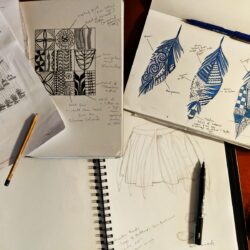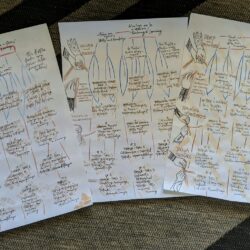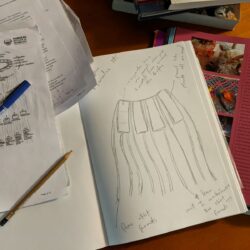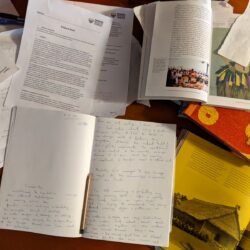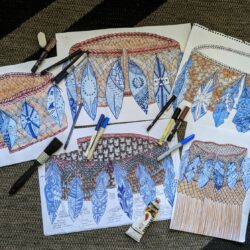“As a mum of 5, Pasifika education means a lot to me. Education is important in our household, so it’s crucial for me to have my children be able to see themselves reflected in higher education. My 2 older sons are seniors in high school and for the past 2 years they have been seeing their friends drop out of school. One dropped out only last week.
There’s an urgent need for our kids to be able to see more brown faces that look like them, continue onto higher education. Education is the key to opening so many doors. And Pasifika education is vital to both our current and future generations.”
Noelle Moa
Artist
Photos supplied by: Noelle Moa.
Noelle was recommended to us as an artist who would be able to take the concept of the programme and connect it to a visual representation. One of the challenges we faced, which come up through our consultation with key partners was ‘how do we ensure that all prospective learners can see themselves as a good fit for this programme’, knowing that the programme is underpinned by a set of four pacific principles but open to learners of all cultures and backgrounds. Across a period of 6 months and many meetings and hand drawn iterations Noelle was able to capture beautifully the inclusiveness of this programme.
How did you feel when you were asked to complete this piece for the Bachelor of Education Primary Pasifika?
“Oh I was so emotional. I was teary, elated, excited, scared, humbled, grateful and just so committed and determined to fulfil this piece. But above all, I felt absolutely honoured.
What does the artwork represent?
“The artwork is a celebration of the 8 Pasifika nations officially recognised by the Ministry of Education NZ. As well as my own knowledge, I pored over books researching the material culture of each nation; I trawled through the Pacific collections held in various museums; scoured historical documents and drawings held in archives, as well as those made available for public access over the internet.
Education is the key to opening so many doors. And many of those doors unlock a wealth of knowledge about our own Pacific cultures, our history and our peoples. In order to move forward in this world, we have to first learn where we have come from and the journeys, the paths, that our ancestors navigated in getting us here. The artwork, the titi, celebrates and acknowledges those journeys. I hope to represent in this piece, the path that our Māori, Fijian, Cook Islands, Samoan, Tongan, Niuean, Tokelauan and Tuvalu forebears weaved before us.”



